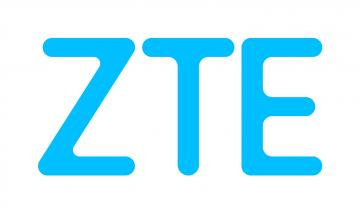Active Chinese Vendors in the OpenStack Community: ZTE’s Contributions Keep Growing

This year, we witness the thriving development of cloud computing technology and industry as the key boost for digital transformation. Cloud computing projects based on open source technologies are now hot spots in the industry, especially OpenStack. At the OpenStack Summit Sydney held in November this year, the surging crowds fully showed the impact of OpenStack.
More and more Chinese vendors play active roles in the OpenStack community by making more contributions and expanding their voices. In the past year, the membership of the OpenStack Foundation has reached 80,000, compared with 40,000 in July last year, including eight new platinum and gold members, of which five are from China. And this increase in the number of Chinese companies testifies to the improvement of both the recognition from Chinese market and the importance the role that Chinese vendors play in the community.
Among them, there are professional cloud computing companies as well as traditional communications vendors. In fact, Huawei, ZTE, FiberHome, the three largest vendors from China, are main contributors to the OpenStack community. According to the statistic data from http://stackalytics.com/, ZTE grows rapidly in this year’s contributions, fully demonstrating its idea of ‘Embracing Open Source’ in the OpenStack field.
As an open source technology, OpenStack maintains a rapid iteration speed, and now its latest version is Pike. According to the latest ranking of contributions, though several IT giants of the USA still hold the lead, Chinese vendors have contributed significantly to the growth, with multiple projects in the top 20.
According to the code contribution’s five main performance indexes—Commits, Completed Blueprints, Reviews, Resolved Bugs, and LoC—in OpenStack, ZTE has been ranked among the top 20 companies comprehensively and respectively.
To be specific, ZTE ranks No.13 in Commits, No.3 in Completed Blueprints, No.16 in Review, No.13 in Resolved Bugs, and No.14 in LoC.
The continuous engagement and contributions of vendors reflect their product capabilities, their understanding of user service, and the rise of their voice in the community. Not only ZTE, the overall contribution of Chinese vendors is also growing, reflecting the increased voice as a whole, to pave the way to the launch of OpenStack in China.
A number of technical experts participate in the community work. The influence in the OpenStack community is not only reflected in code contributions, but also the leadership and management in projects. ZTE has taken an open mind about open source technologies. A number of technical experts have settled into the OpenStack community and have served as PTL and Core Members in many projects.
OpenStack consists of many independent sub-projects, and each project is managed by the PTL (Project Team Leader) who is the Technical Leader of the project. ZTE expert, Zhu Rong, serves as PTL in two OpenStack projects.
Currently, ZTE has nine Core Members in the OpenStack community. Core Member is responsible for the quality of code. If the developer wants to get his/her modification merged into the project code repository, one should commit its code to the Gerrit system, where code can be reviewed by everyone. And the code can be merged when no one shows disagreement and at least two core members give their approval.
At the Project Update of OpenStack Summit, speakers would introduce the progress of the new release compared to the last one. Plans for new features in the next release are also presented. At the OpenStack Summit Sydney, two ZTE experts delivered speeches at Project Update, showing ZTE’s influence in the OpenStack community.
TECS products are in commercial use
The reason for vendors keeping contributing codes and boosting projects in open source communities like OpenStack is to help to build a better community and to use open source technologies to handle their own problems. In Chinese market, open source concept is widely accepted. Taking OpenStack as an example, China has become its second largest application market in the world and keeps growing at a high rate.
Taking China UnionPay as an example, it is very enthusiastic about OpenStack applications in the financial industry that has the strictest safety requirements. Technical experts from China UnionPay pointed out that OpenStack cloud platform has been implemented in production environment in 2012, and all their key applications have been supported by the platform. "We operate our life line and profitable business in the OpenStack environment.”
In the field of communications, open source technologies such as OpenStack have become an important driving force for network transformation. Many new applications and corresponding de facto standards are coming from open source communities. ZTE actively promotes the application of OpenStack. ZTE TECS, an OpenStack-powered cloud management platform, has successfully passed the Interop Challenge conducted by the OpenStack Foundation, meeting OpenStack’s interoperability requirements for commercial releases.
Embracing the concept of open source and enterprise development are interactive forces. The open concept has made ZTE investing a wide range of resources into OpenStack, OPNFV, Docker, Kubernetes, ONAP OpenDaylight, and other open source communities. ZTE has gained extensive influence through its contribution to the open source community, which in turn has strengthened ZTE's product development capabilities, and it has become one of the world's leading providers of SDN / NFV.